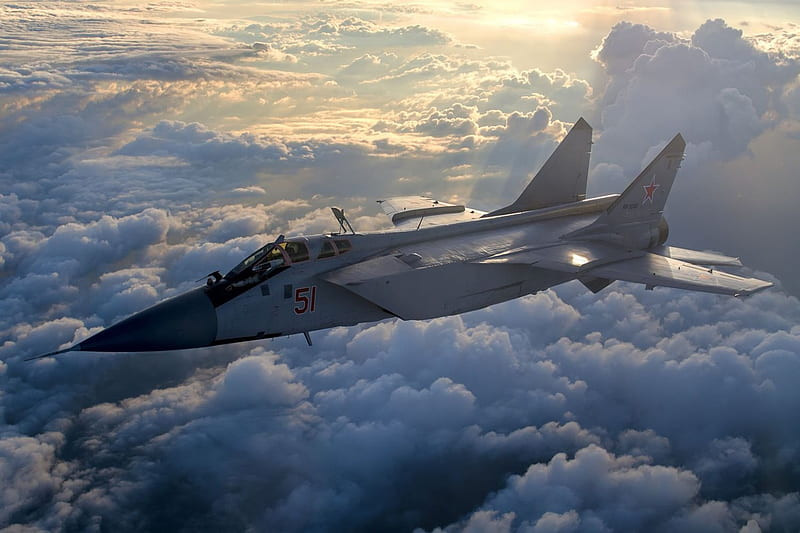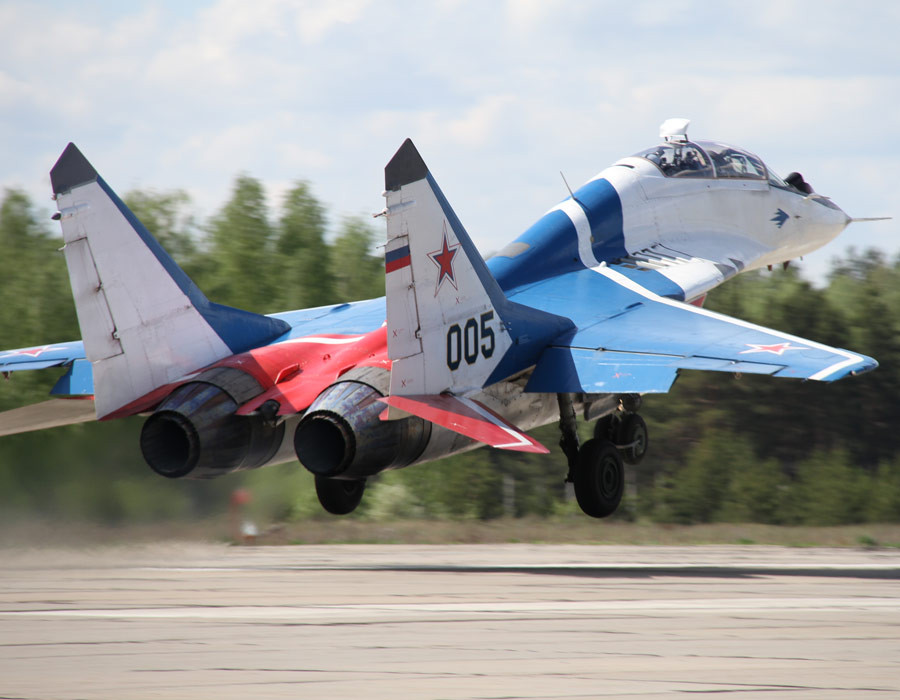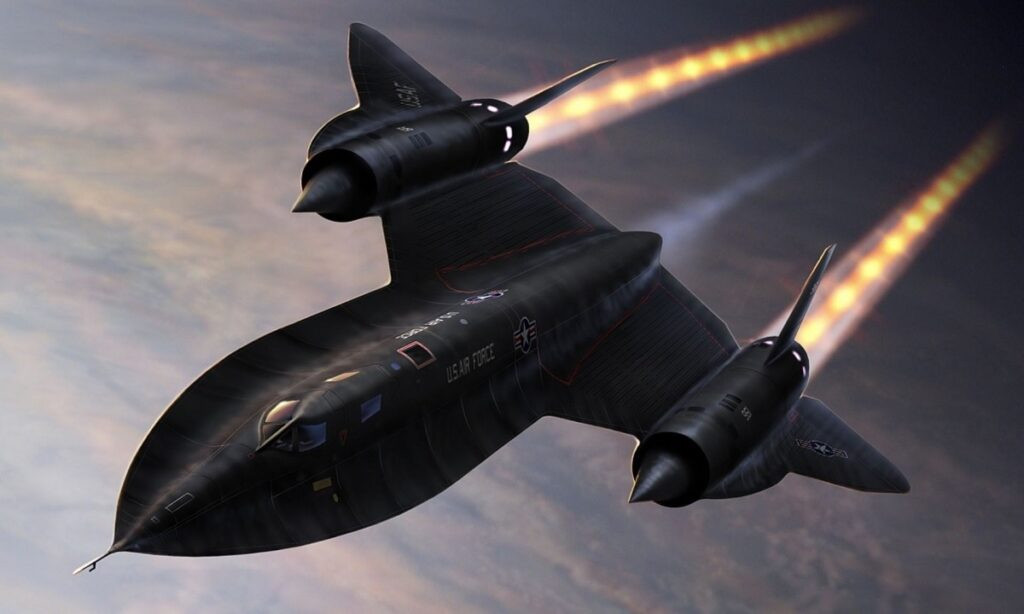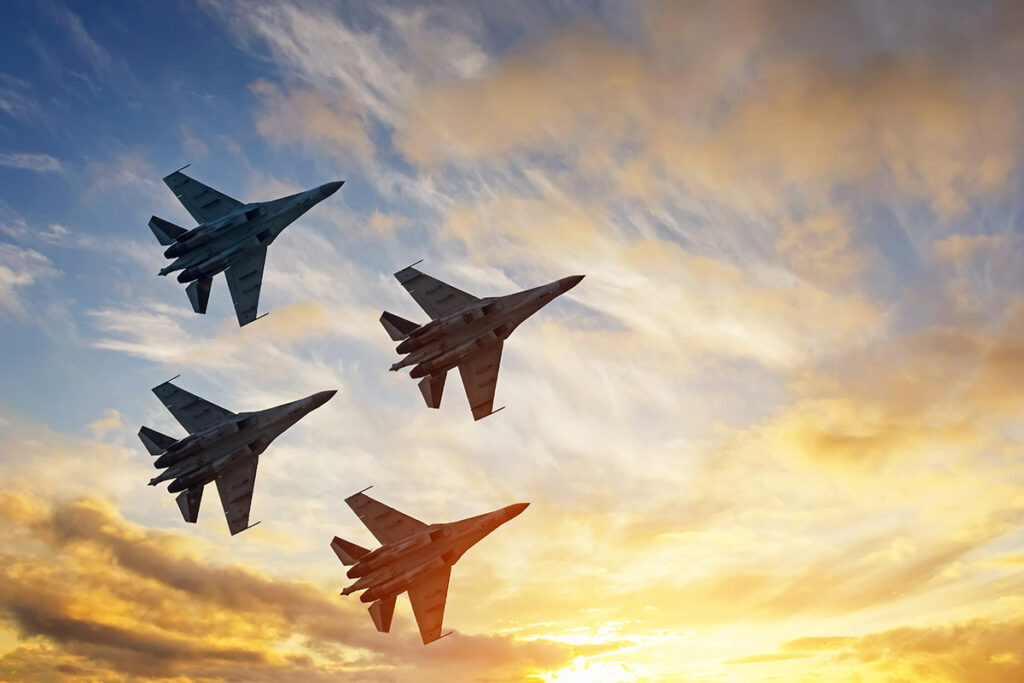Fighter jets are engineered for aerial dominance, so it’s natural to wonder about their altitude capabilities. The question of “How High Can Fighter Jets Fly” is more complex than it appears, sparking considerable discussion. This article will provide a comprehensive answer, exploring the factors limiting a military jet’s maximum altitude and highlighting record-breaking aircraft that have pushed these boundaries.
Commercial airliners typically cruise between 30,000 to 45,000 feet. Interestingly, the operational ceiling for many commercial planes, around 42,000 feet, is often cited as a fighter jet’s maximum altitude. This altitude is known as the service ceiling, defined as the highest altitude at which an aircraft can maintain a steady climb rate of 100 feet per minute. However, for fighter jets, this is just the beginning of the story.
Record-Breaking Supersonic Fighter Jets and High-Altitude Pioneers
While the service ceiling provides a general guideline, several aircraft, particularly experimental and record-setting models, have flown significantly higher. These aircraft have not only pushed the limits of aviation technology but have also contributed valuable data to aerospace engineering. Let’s explore some of the most notable examples:
1. North American X-15: Bridging the Gap to Space
The North American X-15 stands as a monumental achievement in hypersonic flight and the early stages of space exploration. First flown in 1959, this aircraft was the product of collaboration between North American Aviation, who designed the airframe, and Reaction Motors, responsible for the powerful rocket engines. The X-15 program was part of the X-plane series, a joint venture between the U.S. Air Force (USAF) and NASA to explore the boundaries of flight.
In 1963, piloted by Joseph Walker, the X-15 achieved a remarkable altitude of 354,200 feet, or 67 miles above the Earth’s surface. This is the highest altitude ever reached by a crewed military aircraft. This altitude is so extreme that it technically qualifies the pilots as astronauts, leading to the development of early “space suits” to protect them in the harsh conditions at such heights. Some debate whether the X-15 should be classified as an airplane due to its rocket-like propulsion and reliance on self-contained oxygen, blurring the lines between aeronautics and astronautics.
2. Mikoyan-Gurevich MiG-25 E-266M: The Absolute Altitude Record Holder
 MiG-25 Foxbat
MiG-25 Foxbat
The Mikoyan-Gurevich MiG-25, known as “Foxbat” in NATO designation, was a high-speed interceptor and reconnaissance aircraft developed by the Soviet Union’s Mikoyan Design Bureau. The E-266M variant was a specially modified version of the MiG-25, specifically designed for breaking speed and altitude records.
According to Smithsonian Magazine, on August 31, 1977, Alexandr Fedotov piloted the E-266M to an astonishing 123,523 feet. This record remains the highest altitude ever achieved by a ground-launched airplane using air-breathing engines. Tragically, Alexandr Fedotov lost his life in 1984 during a MiG-31 test flight, but his altitude record with the MiG-25 E-266M endures as a testament to Soviet aviation engineering.
3. Mikoyan MiG-29: Edge-of-Space Flights
 MiG-29 Fulcrum
MiG-29 Fulcrum
The Mikoyan Design Bureau also created the MiG-29, a twin-engine supersonic jet fighter initially conceived as an air superiority fighter for the Soviet Air Force. Over time, the MiG-29 has evolved into a versatile multirole combat aircraft, excelling in air interception, air defense, and ground attack roles.
Interestingly, the MiG-29 offers a unique opportunity for civilians: High-Altitude Flights, often marketed as “Edge-of-Space Flights.” These flights in specially modified MiG-29s guarantee a height of 55,440 feet (10.5 miles), with potential climbs to approximately 11.8 miles. While the official service ceiling of the MiG-29 is around 59,100 feet (11.2 miles), MiGFlug, an operator offering these flights, claims to have reached 75,459 feet (14.3 miles). Current operational altitudes are slightly lower due to adjustments in speed limitations from Mach 1.7 to Mach 1.9.
4. Lockheed SR-71 Blackbird: The High-Flying Reconnaissance Legend
 Lockheed SR-71 Blackbird
Lockheed SR-71 Blackbird
Beyond altitude, the SR-71 Blackbird is revered as one of the most iconic American long-range strategic reconnaissance aircraft. It dominated the skies during the Cold War with its unmatched speed and altitude capabilities. Its airframe, constructed from titanium – a revolutionary material at the time – was designed to withstand the extreme heat generated by air friction at hypersonic speeds.
The Lockheed SR-71 “Blackbird” holds the world record for the highest altitude achieved by an air-breathing jet engine aircraft (excluding rocket-powered planes like the X-15) at 85,135 feet. NASA confirms that the SR-71 remains the highest-flying production model aircraft ever built. It is widely speculated that the SR-71 could reach even greater altitudes, but specific details beyond the official record remain classified, adding to the mystique of this legendary aircraft.
Limitations: Why Fighter Jets Can’t Fly Infinitely High
 fighter jet in the world
fighter jet in the world
There are fundamental physical and engineering reasons why even the most advanced fighter jets cannot fly to unlimited altitudes. Exceeding the maximum altitude poses significant risks and limitations due to several factors:
Cabin Pressure Differential: Maintaining a Breathable Environment
Maintaining adequate cabin pressure is crucial for the safety and comfort of the crew at high altitudes. Without a pressurized cabin, occupants would be unable to breathe and would quickly succumb to the effects of hypoxia.
As an aircraft ascends, the pressure difference between the cabin interior and the external atmosphere increases. This pressure differential peaks at approximately 9 PSI (pounds per square inch) around 43,000 feet. Exceeding this pressure limit not only endangers the occupants but can also cause catastrophic structural damage to the aircraft due to the immense stress on the fuselage.
Engine Thrust and Air Density: The Need for Oxygen
Jet engines require air to function; specifically, they need oxygen to combust fuel and generate thrust. As an aircraft climbs into higher altitudes, the air density decreases significantly. This means that fewer air molecules, and consequently less oxygen, are available for the engines to intake.
In thinner air, engines struggle to generate sufficient thrust to maintain flight. The problem is exacerbated by higher temperatures, which further reduce air density. As a result, the maximum achievable altitude is often lower on hotter days. Eventually, the aircraft will be unable to maintain the minimum climb rate necessary for safe operation, effectively reaching its altitude ceiling.
Control and Aerodynamics: Angle of Attack and Lift
At high altitudes, the thinner air also affects the aircraft’s aerodynamic control. To generate lift in less dense air, a pilot must increase the angle of attack – the angle between the wing and the oncoming airflow.
However, there is a critical limit to the angle of attack. If the angle becomes too steep, the airflow over the wings becomes turbulent and separates from the wing surface. This phenomenon, known as stall, drastically reduces or eliminates lift.
Combined with reduced engine thrust in thin air, maintaining stable flight beyond a certain altitude becomes incredibly challenging, if not impossible. The aircraft may become sluggish and unresponsive, or require extreme control adjustments to stay on course, pushing the limits of both the aircraft and the pilot.
Conclusion: The Impressive, Yet Limited, Heights of Fighter Jets
Modern fighter jets can reach impressive altitudes, often far exceeding the typical cruising altitudes of commercial airliners. While the service ceiling for many fighters is around 42,000 feet, experimental and record-breaking aircraft like the X-15 have soared to astonishing heights, even approaching the boundary of space. The X-15’s record of 354,200 feet remains a remarkable achievement, although its classification as a fighter jet is debated.
Despite these exceptional cases, the practical operational altitudes for most fighter jets and even high-performance business jets remain below their absolute altitude ceilings due to the physical and engineering limitations discussed. Understanding these limitations provides a deeper appreciation for the incredible engineering and piloting skills required to operate aircraft at the very edge of the Earth’s atmosphere.
If you have further questions about fighter jet capabilities or aviation technology, please feel free to contact us.